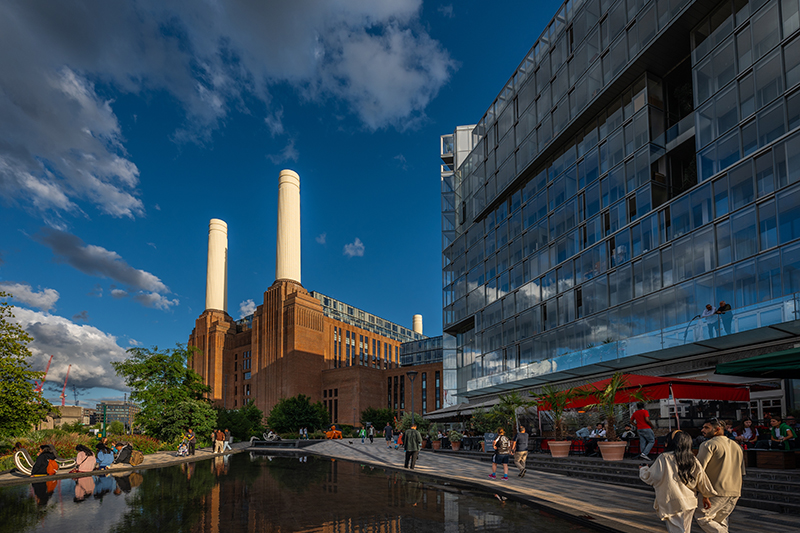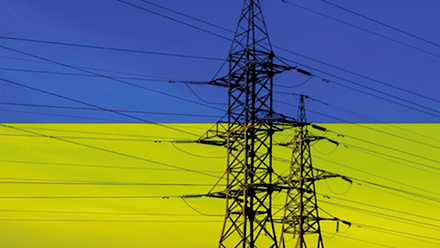New lease of life for the historic built environment
For the 20th Anniversary of the seven City Heritage Trusts in Scotland, UK, Craig Durham CEng FIMMM, Trustee at Inverness, on the challenges and rewards in preserving our historic built environment.

Why do buildings from the 1660s, 1760s and 1860s capture our imaginations more readily than anything built in the 1960s? Is it their tangible link to the past, a reminder of who we are and where we come from, a sense of our place in time?
Or are the architectural details and decorative finishes of natural stone, timber, lead and slate more aesthetically pleasing than modern concrete, steel and glass?
Whatever the reason, we are unquestionably a nation in love with our heritage. Membership of the National Trust and National Trust for Scotland is more than six million, making them the largest membership organisations in the UK – with over 600 properties under their care.
Historic England and Historic Environment Scotland have approximately 547,000 listed buildings registered, with the vast majority pre-dating WWII, and any building pre-dating 1850 is almost certain to be on the list. To put that into perspective, there are only 94,000 buildings on the US National Register of Historic Places.
Nearly every major city in the UK has a significant heritage project underway, revamping and repurposing buildings that have been unoccupied for decades. Take the recently re-opened Battersea Power Station in London. This Grade II listed building, designed by Sir Giles Gilbert Scott in the 1920s, ceased power generation in 1978 and, by the turn of the century, after several failed ventures, its gigantic turbine halls were roofless and all four of the iconic chimneys were under a dangerous structures notice.
More than a quarter of its six-million bricks were badly damaged from 80 years of weathering and 40 years of coal-fired power generation. Then, in 2014, a Malaysian consortium purchased the site to redevelop it as residential property, bars, restaurants, office space, shops and entertainment spaces.
The technical challenges included the demolition and reconstruction of the chimneys using the original architects’ plans and specifications, including 25,000 wheelbarrows of concrete poured by hand into shuttered layers in each chimney.
Around 1.75 million replacement bricks were sourced from two of the companies who had manufactured the originals, including 1.3 million new hand-pressed bricks from Northcot Brick using the same Lower Jurassic and Middle Lias clay that provided the golden-brown-coloured originals.
The result is the cavernous Turbine Hall A – restored to all its 1930s Art Deco splendour – and the more sober Turbine Hall B, reflecting 1950s modernism and post-war austerity. Original features have been retained as much as possible, such as in Control Room B, now a cocktail bar set among the original dials and controls.
A key enabler to redevelopment of the area was the £1.1bln Northern Line underground extension and two new stations – Nine Elms and Battersea Power Station. The developers provided £270mln towards the total cost of the extension, within the economically significant Zone 1 on the London Underground map. It’s fair to say there would not have been a viable business case without this vital new transport infrastructure.
While the scale of private investment and local authority backing required for mega-projects like Battersea might only work in a metropolitan city environment, most towns have examples of historic or listed buildings that have found a new lease of life through some creative thinking and public funding.
Did you know?
The reconstruction of the chimneys at Battersea Power Station, UK, was meticulously planned to ensure it retained its iconic look. The four chimneys were rebuilt between 2014 and 2017 using the original construction technique. Rather than use a hose to pour the concrete, 680t of concrete were lifted in a hoist to the top of the chimney, transferred into wheelbarrows and then hand poured into the structures.
Source: batterseapowerstation.co.uk
To showcase these smaller projects, the Royal Institute of British Architects (RIBA) recently created the Reinvention Award, in recognition of 'buildings that have been creatively reused to improve their environmental, social, or economic sustainability – increasing the longevity and energy efficiency of existing buildings and reducing the need for demolition and new construction'.
The inaugural prize was won by Van Heyningen & Haward architects for Houlton School on the site of the former Rugby Radio Station in Warwickshire. Three new state-of-the-art school blocks were created from the Grade II listed transmitter building. The citation from the RIBA awards jury says it is 'a great example of how we can retrofit our historic buildings to safeguard their future. It is a testament to the value we place on our historic building stock and demonstrates that, even within the challenging context of designing a school building with so many challenges and constraints, a successful retrofit can be achieved with vision, creativity and ambition'.
Despite these successes, Historic England has more than 2,000 listed buildings on its Heritage at Risk register. This list contains everything from public houses, baths and police stations, to farmhouses, barns and stables, and our extensive industrial heritage mills, foundries and factories too.
Nearly half the listings are places of worship, reflecting a dramatic fall in church membership over the last 50 years. In Scotland, the problem is particularly acute, with the Church of Scotland anticipating more than 400 churches to come on the market over the next five years. Until these are sold, it remains the responsibility of the local parish to maintain the building in a reasonable state of repair – no easy task with an ageing and dwindling congregation, so you can see why they are keen to sell them on.
To provide some guidance, the Scottish Civic Trust has published New Uses for Former Church Buildings, with case histories of commercial, residential, educational and recreational uses, culminating in a list of 101 different examples, including bars (surprisingly common), nightclubs and even a casino.
Church restoration poses several unique challenges, not least being a strong community attachment. Even when that same community no longer attends a regular service, they may not be too happy to see the place where gran and grandad were married, or great-aunt Ida is buried, turned into a bar or nightclub.
In any case, listed building status will likely constrain the type of repair, refurbishment and permitted development allowed. For example, old churches are nearly all cold, draughty and expensive to heat, so you would think the installation of solar panels is a no-brainer? High up and clear of shade, south facing and at the perfect angle for maximum sunlight, a church roof offers the ideal location. But for listed buildings, planning constraints usually mean that panels on the church roof are hidden from street view. Next time you walk past a church, see how impractical that is. Removing such constraints might help achieve a viable redevelopment plan, while meeting net-zero commitments at the same time.
Preserving and caring for our extensive built heritage is a huge economic and technical challenge that some would prefer to simply disappear altogether. Every fortnight the Nooks and Corners column in the satirical magazine Private Eye details the shenanigans of local authorities and developers trying to wriggle out of their obligations.
Countering that is a passionate army of trustees and volunteers that collectively make up the membership of around 400 heritage trusts in the UK, all working hard on feasibility studies, developing project plans, raising funds and, most importantly, having the vision to imagine what a new lease of life would look like. Forming a charitable trust provides the legal framework to raise funds, purchase the building and undertake restoration, so it is the most common method for community groups to take control of a building at risk.
People are naturally drawn to conservation projects and the strong sense of working together towards a common goal. Perhaps in this ‘here today, gone tomorrow’ world of social media, we all have a desire to leave a more permanent, tangible legacy. After all, Rome wasn’t built in a day, and the Battersea Power Station wasn’t saved by a tweet.







